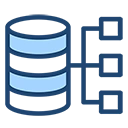Database schema for Intelligent Farming System
Designing a database schema for an Intelligent Farming System involves capturing information related to crops, sensors, weather data, farm equipment, and other relevant entities. Below is a basic example of a database schema for an Intelligent Farming System.
Entities:
Crop:
- CropID (Primary Key)
- CropName
- CropType
- PlantingDate
- HarvestDate
- ExpectedYield
- SoilType
- FarmID (Foreign Key referencing Farm table)
Farm:
- FarmID (Primary Key)
- FarmName
- Location
- FarmSize
- CropRotationCycle
- OwnerID (Foreign Key referencing Farmer table)
Sensor:
- SensorID (Primary Key)
- SensorType
- Location
- InstallationDate
- FarmID (Foreign Key referencing Farm table)
WeatherData:
- WeatherDataID (Primary Key)
- DateTime
- Temperature
- Humidity
- Rainfall
- WindSpeed
- FarmID (Foreign Key referencing Farm table)
FarmEquipment:
- EquipmentID (Primary Key)
- EquipmentName
- Type
- PurchaseDate
- FarmID (Foreign Key referencing Farm table)
CropMonitoringData:
- MonitoringID (Primary Key)
- CropID (Foreign Key referencing Crop table)
- SensorID (Foreign Key referencing Sensor table)
- DateTime
- SoilMoisture
- CropHeight
CropHarvestData:
- HarvestID (Primary Key)
- CropID (Foreign Key referencing Crop table)
- DateTime
- Yield
- Quality
Farmer:
- FarmerID (Primary Key)
- FirstName
- LastName
- ContactNumber
- Address
This schema covers the basic entities needed for an Intelligent Farming System. Here are some explanations:
- Crops are associated with specific farms and have details like planting date, harvest date, expected yield, and soil type.
- Farms are defined with information about location, size, crop rotation cycle, and the farmer who owns the farm.
- Sensors and weather data provide real-time information about the farm environment.
- Farm equipment records details about the tools and machinery used on the farm.
- CropMonitoringData captures data collected from sensors during crop growth, including soil moisture and crop height.
- CropHarvestData records data about harvested crops, including yield and quality.
- Farmer represents the individuals managing the farms.
Depending on the specific requirements of your Intelligent Farming System, you may need to expand or modify this schema. Consider additional features such as pest monitoring, automated irrigation, crop disease tracking, or any other information relevant to your farming system. Additionally, ensure that your system aligns with data privacy and security regulations.

